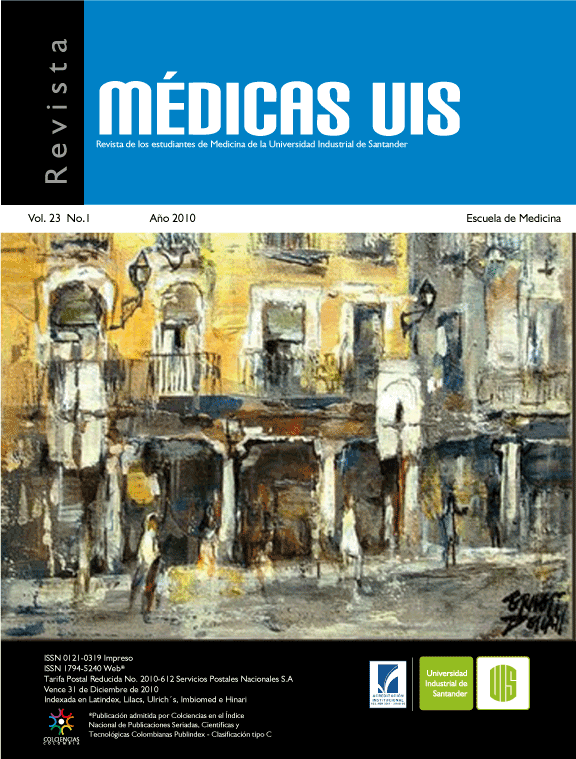Resumen
La enfermedad cerebrovascular es una importante causa de muerte e incapacidad en todo el mundo. Esta enfermedad es consecuencia de un complejo grupo de procesos fisiopatológicos que afectan la vasculatura del sistema nervioso, resultando en isquemia y modificaciones del metabolismo neuronal. Se ha demostrado que células neurales han ayudado a reparar los daños asociados a la enfermedad cerebrovascular en modelos animales y han conducido a mejoras en su capacidad física. Además, se ha observado que la aplicación endógena de células madre ocasiona neurogénesis espontánea en respuesta a la lesión isquémica y se puede mejorar a través de una adecuada infusión de citoquinas. En esta revisión se analizan diversos aspectos de la potencial aplicación de las células madre como estrategia terapéutica en el manejo de la enfermedad cerebrovascular.
Palabras clave: Células madre. Enfermedad cerebrovascular. Ictus. Cerebro.
Referencias
2. Burns TC, Verfaillie CM, Low WC. Stem Cells for Ischemic Brain Injury: A Critical Review. J Comp Neurol 2009;515:125–44.
3. Paula S, Pedroso M, Dalbem A. O potencial terapêutico das células-tronco em doenças do sistema nervosa. Scientia Medica, Porto Alegre: PUCRS 2005;15(4).
4. Ping Y, Lang B, Baskaya M, Dempsey R, Vemuganti R. The potential of neural stem cells to repair stroke-induced brain damage. Acta Neuropathol 2009;117:469–80.
5. Zheng Gang Zhang, Michael Chopp. Neurorestorative therapies for stroke: underlying mechanisms and translation to the clinic. Lancet Neurol 2009;8:491–500.
6. Manual de la OMS para la vigilancia paso a paso de accidentes cerebrovasculares de la OMS: estrategia paso a paso de la OMS para la vigilancia de accidentes cerebrovasculares / Enfermedades no Transmisibles y Salud Mental, Organización Mundial de la Salud, 2005.
7. Lloyd-Jones D, Adams R, Mercedes Carnethon: Heart Disease and Stroke Statistics—2009 Update, A Report From the American Heart Association Statistics Committee and Stroke Statistics Subcommittee. Circulation. 2009;119:e21-e181
8. Accidente cerebrovascular. Rev Argent Cardiol 2003;71(supl 2).
9. Werner Hacke, Markku Kaste, Erich Bluhmki, et al: Thrombolysis With Alteplase 3 to 4,5 Hours after Acute Ischemic Stroke. N Engl J Med 2008;359:1317-29.
10. Rodríguez-Pardo V. Células Madre: Conceptos Generales Y Perspectivas De Investigación. Universitas Scientiarum 2005;10(1):5-14.
11. Consuegra Manzano E; Ballesteros Salcero H; Alcala Garcia G; Nieto Osorio P; Santana Contillo M; Rodriguez Delaytz J: El ABC Del Estado Del Arte En Células Madre. UNIMETRO 2006;24(41):31–44.
12.Ben Roitberg. Transplantation for stroke. Neurol Res 2004;26, April.
13. Thored P, Arvidsson A, Cacci E, et al. Persistent Production of Neurons from Adult Brain Stem Cells During Recovery after Stroke. Stem Cells 2006;24:739–47.
14. Snapyan M, Lemasson M, Brill M. Vasculature Guides Migrating Neuronal Precursors in the Adult Mammalian Forebrain via Brain-Derived Neurotrophic Factor Signaling. J Neurosci 2009;29(13):4172–88.
15. Lobo M, Alonso J, Redondo C, et al. Cellular Characterization of Epidermal Growth Factor-expanded Free-floating Neurospheres. J Histochem Cytochem 2003;51:89–103.
16. Belayeva L, Khoutorovaa L, Zhaob K, Davidoffc A, Moorec A, Cramerd S. A novel neurotrophic therapeutic strategy for experimental stroke. Brainresearch 2009;1280 :117–23.
17. Guzman R, Choi R, Gera A. Intravascular cell replacement therapy for stroke. Neurosurg Focus 2008;24(3&4):E14.
18. Hicks A, Jolkkonen J. Challenges and possibilities of intravascular cell therapy in stroke. Acta Neurobiol Exp 2009;69:1-10.
19. Muotri A, Nakashima K, Toni N, Sandler V, Fred H. Development of functional human embryonic stem cell-derived neurons in mouse brain. PNAS 2005;102(51)18645.
20. Kondziolka D, Wechsler L, Goldstein S, et al.. Transplantation of cultured human neuronal cells for patients with stroke. Neurology. 2000;55(4):565-9.
21. Kondziolka D, Steinberg G, Wechsler L. Neurotransplantation for patients with subcortical motor stroke: a Phase 2 randomized trial. J Neurosurg 2005;103:38–45
22. Sánchez-Pernaute, Lorenz Studer, Ferrari D. Long-Term Survival of Dopamine Neurons Derived from Parthenogenetic Primate Embryonic Stem Cells (Cyno-1) After Transplantation. Stem Cells 2005;23:914–22.
23. Ronald van Os, Leonie M. Kamminga, Gerald de Haan. Stem Cell Assays: Something Old, Something New, Something Borrowed. Stem Cells 2004;22:1181–90.
